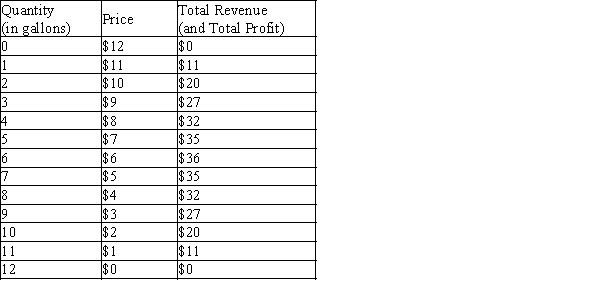Table 17-2
Imagine a small town in which only two residents, Abby and Brad, own wells that produce safe drinking water. Each week Abby and Brad work together to decide how many gallons of water to pump. They bring water to town and sell it at whatever price the market will bear. To keep things simple, suppose that Abby and Brad can pump as much water as they want without cost so that the marginal cost is zero. The weekly town demand schedule and total revenue schedule for water is shown in the table below: 
-Refer to Table 17-2. If this market for water were perfectly competitive instead of monopolistic, what would be the price for water?
Definitions:
Uninsurable Risks
Represent risks that insurance companies are not willing to cover due to their unpredictable nature or high likelihood of loss.
Production Innovations
New and improved methods or products that increase efficiency or quality in manufacturing or service delivery.
Economic Profits
Profits exceeding the opportunity costs of a business, indicating gains beyond the next best alternative use of its resources.
Monopoly Power
The ability of a single seller or company to control the market for a particular good or service, allowing them to set prices above competitive levels.
Q57: Compare the equilibrium output in a duopoly
Q127: After initial success, the OPEC cartel saw
Q136: When a group of firms acts in
Q139: Refer to Table 17-4. If the market
Q163: The decisions of the US and Soviet
Q185: Refer to Table 17-6. Suppose the town
Q212: A law that restricts the ability of
Q301: Predatory pricing occurs when a firm<br>A)exercises its
Q395: As a group, oligopolists would always be
Q487: To maximize its profit, a monopolistically competitive